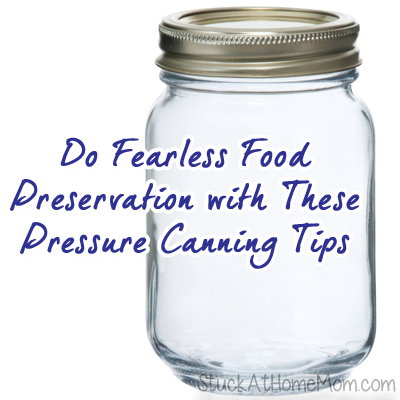Do Fearless Food Preservation with These Pressure Canning Tips
In simple words, canning is a step ahead from cooking. This method involves heating your food in a closed-glass jar to prevent food from natural decomposition and removes air to create a seal. Home-canned food is like a gift to yourself and by learning the appropriate pressure canning tips, you will not only be able to preserve your food safely, but actually save a lot on your groceries all year long.
You have probably heard scary canner exploding stories or seen a few on the internet and now you feel intimidated using it. Need not to worry as pressure canners today are quite safer than those used by our grandma in 1980s. We have scientifically tested recipes at our disposal which have significantly minimized the risk of botulism from home-canned food. Read the tips on pressure canning and you’ll be an expert at safely pressure canning your food.
1. No blow-ups. Let go of your fear that your canner will blow up. Modern pressure canners are safe when used correctly as they are equipped with a pressure fuse. As the inside pressure of the canner raises to an alarming level, the pressure fuse will detach the canner. This will release the pressure built up inside the canner and thus prevent any unfortunate incident.
2. Use low-acid foods: To prevent the risk of botulism, you must can low-acid foods in your pressure canner. These include:
Dairy
Meat
Vegetables
Poultry
Sea Food
Fruits such as dates, papayas, figs, pineapples, pears
3. Correct temperature to process low-acid foods: You must process the low-acid food at 240°F to 250°F. To attain a compatible temperature for killing botulism spores, you must keep your canner pressure at 10 to 15 pounds. The time taken will vary depending on the type of food, probably from 15 to 100 minutes. Size of jars and the way food is put into them also affect the processing time for these jars.
4. Avoid immersing the lid of dial gauge canners in water: If water gets to the lid of the dial gauge canner, it will cause the gauge to rust. So, one should always avoid the water contact with the pressure canner having a dial gauge.
5. Not all stove top surfaces are appropriate for pressure canning: Some newer brands available in the market are not suitable to high BTUs of propane burners. The high heat is likely to distort the base of your canner. You can also not use larger size pressure canners on ceramic and glass stove tops. These stove tops will be damaged by heavy weight and high heat. Best these pressure canners can be used with your electric stove range, solid fuel stoves, or gas stoves.
6. Careful about the processing time: If you see the pressure inside the canner dropping below, you’ll need to raise the heat to bring up the pressure back. Only then should you begin the processing time again. You need to time the processing time when the pressure is appropriate for a safely canned food.
When you process food in a pressure canner, carefully follow the manual’s instruction to run your canner. However, if you’re using an old or a used pressure canner, these tips might come in handy to you.

